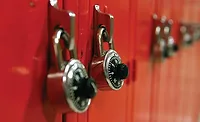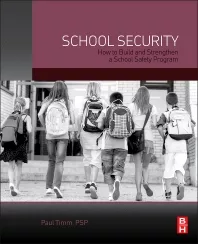Elevating School Safety with Interoperable Communications

Earthquakes. Active shooters. Tornadoes. Wildfires. Trespassers. Fires. These are all prime examples of incidents that every school needs to be and should be well-prepared for. All these incidents highlight the need for interoperable communications—a capability that school emergency managers often overlook or underestimate when it comes to their safety needs.
At a high level, interoperability enables schools to share information—two-way radio, voice telephony, video, text and data—with first responders in real time. For example, police officers can access a school’s live surveillance feeds while they’re en route so they can literally see what’s going on at the campus. This enables them to make informed decisions about how best to respond before they arrive on scene.
With the lack of real-time information sharing, first responders typically spend the first several minutes after arriving on scene on getting a debrief from emergency managers or other school staff that are present, such as principals or faculty members. Those countless minutes could be better spent locating the active shooter or trespasser on campus, who is endangering students and staff, for example, which illustrates how more time saved can mean more lives saved.
The attacks on September 11th highlighted not only the need for real-time information sharing platforms, but also the reasons why it’s so difficult to achieve. Police, fire fighters, state and federal agencies historically used incompatible radio and other communications systems. As a result, they wasted precious time while radios were traded, or complicated bridge lines were established. FirstNet is an example of how these agencies are working toward an interoperable communication system spanning voice, video, text and data. Now it’s time for schools nationwide to ensure that they can quickly and accurately share information with all first responders to provide a real-time, holistic view of any situation.
Engaging the community in emergency management
It’s equally important to share information with other key stakeholders, particularly faculty, staff, board members and parents. Keeping them informed about the emergency-preparedness plan—including how it works from a technological perspective, the policies for implementing this plan and the privacy safeguards—helps ensure their support and avoids surprises down the road. Their involvement also can help uncover information sources and scenarios that school emergency managers might overlook or underestimate simply because they’re not involved in certain situations on a daily basis.
The scope of an emergency is often not easily outlined at the start of the situation – the key here is to provide strategy and tools that will ensure flexibility as the incident unfolds. While community members not involved in emergency management on a day-to-day basis may be reluctant to participate in planning and training, they have a role to play in an actual incident and will face it with more resilience if educated from the start of it.
In the case of a school incident, this means bringing administrators, office and security personnel, teachers and facility managers/leaders together with law enforcement and emergency management teams to plan and practice procedures for various scenarios so that all is prepared. The hands-on use of technology, not only a few times a year during training exercises, but on a regular basis, will create familiarity and fluency. In this way, seamless coordination of resources will be second nature should the unimaginable happen.
Finally, engaging with the whole community on a regular basis will help to build relationships and trust, which will ensure smooth interactions during an actual emergency. Involving community members in planning and establishing clear expectations of their roles and behavior during response will build ownership and instill purpose throughout the entire team. The communication that delivers excellent emergency management results is a product of both tools and relationships, both of which improve with everyone’s practice.
FEMA: the go-to emergency preparedness source
The United States Federal Emergency Management Agency (FEMA) offers emergency planning toolkits for businesses, citizens, and schools. Included in the toolkit is a Communications Checklist to ensure that phones, intercoms, radios and panic buttons function properly and are optimized to mitigate all threats. A Partnering with Law Enforcement checklist is also included for the public to take advantage of.
Ideally, schools and other facilities experiencing an emergency will be able to communicate via voice and video with not only local law enforcement, but also with the county, regional, state and even Federal first responders and emergency management personnel. It is possible. Currently, communities across the country are prepared, with having turned to the multimedia interoperability technology mentioned earlier.
In northern New Jersey, groups of hospitals, public transit providers, county emergency management agencies, local law enforcement, state agency and Federal partners, including FEMA, work with their peers across the border in New York, practicing and training not only with the interoperability technology, but also honing procedures and relationships throughout the community. In this way, they become one team together, in addition to performing separate functions as independent teams.
Bright future of emergency preparedness
Across the nation, the landscape of emergency preparedness will continue to evolve. And with time, new solutions will continue to emerge and key learnings will also continue to be identified post-incident. Technology’s role will also continue to further evolve, with added integration into emergency response plans, improving and streamlining processes in the face of any emergency. Multimedia interoperability and its capabilities will become more ingrained. Seamless, real-time communications will become further and further realized, leading us into improved outcomes.
Looking for a reprint of this article?
From high-res PDFs to custom plaques, order your copy today!







